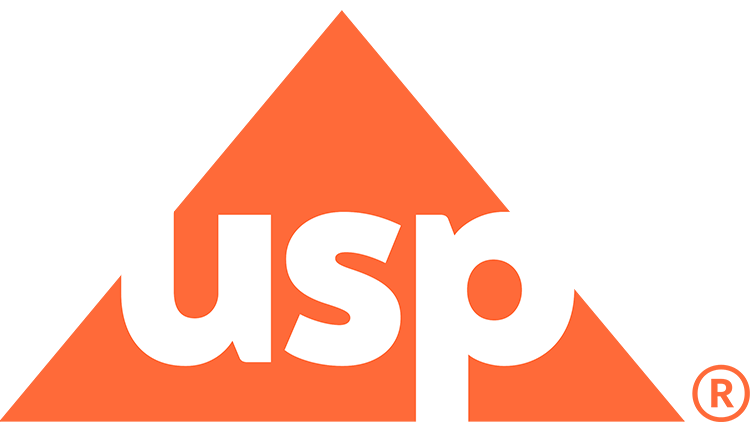
Making Prescription Labels Easier to Understand

Prescription labels have a lot of details on them, which can make it difficult for patients to find and use important information.
Wisconsin Health Literacy (WHL), a division of Wisconsin Literacy Inc, is a non-profit organization that aims to strengthen personal and organizational health literacy throughout Wisconsin and nationwide. In conjunction with their academic partner at the Medical College of Wisconsin, WHL is working to make prescription medication labels easier to understand for patients through their Medication Label Initiative.
The initiative includes 4 phases to improve the adoption of United States Pharmacopeia (USP) Chapter 17 standards. Phases 1 through 3 have been completed and phase 4 will focus on advocacy at the prescriber level.
Why change prescription labels?
Prescription labels have a lot of information on them, which can make it difficult for patients to find and use important information, such as the drug name and the directions for use. Any person can misinterpret prescription directions, but individuals with lower literacy levels or complex drug regimens are more likely to misinterpret directions.1
These comprehension issues contribute to low medication adherence, which can harm patients by over-treatment, toxicity, or an inadequate therapeutic response.2 As a result, patients experience poor health outcomes, health care services are overused, and overall costs increase.2 Therefore, it is important to improve prescription labels to prevent these problems.
USP Chapter 17 Standards
The USP Chapter 17 standards provide guidelines on how to create a patient-centered label. WHL’s Medication Label Initiative is a multi-phase initiative to improve the adoption of these standards, which include:3
- Patient-centered organization of the prescription label so that the most important information to patients is at the top.
- Easier to read labels using sentence case, high contrast print, large font, more white space, and horizontal text.
- Clear and standardized directions making it easier for patients to know exactly when and how to take their medications.
- Simple and explicit auxiliary labels.
Medication Label Initiative Phases 1-3
The Medication Label Initiative consists of multiple phases. Phase 1 was a study to assess the feasibility of implementing USP standards. Based on the encouraging results from phase 1, a pilot project was initiated to redesign the medication labels of a group of independent pharmacies during phase 2.4
Phase 3 involved expanded adoption of patient-centered labels across Wisconsin. Pharmacies often use different wording and formatting to represent the same instructions, so an important element of this work was standardizing language at the pharmacy level and improving awareness of the many ways directions can be misinterpreted. Improving the use of standardized directions when prescribing medications was also explored at pilot clinic sites.
Participation was kept strictly voluntary, and WHL worked closely with pharmacy and physician leaders to help with successful adoption of USP standards. WHL also conducted consumer focus groups to directly learn about the issues patients faced when taking medication and to learn what was most important to them on their medication label. During these focus groups, people designed their own prescription labels and the resulting labels were similar to USP Chapter 17 recommendations.
Medication Label Initiative Phase 4
Pharmacists are restricted in their ability to change instructions from what is written on prescription labels. Therefore, phase 4 will focus on advocacy at the prescriber level so that the directions on prescription labels are more explicit for patients to prevent misinterpretation and errors.
For example, many commonly used instructions leave it up to the patient to interpret when to take their medication.
The Universal Medication Schedule (UMS) is a set of standardized directions that uses timings of morning, noon, evening, and bedtime so that patients know exactly when to take their medication. For example, instead of directions that say “Take 1 tablet by mouth twice daily,” UMS directions say “Take 1 tablet by mouth in the morning and 1 tablet in the evening.”
Patients are able to demonstrate how to take their medication with greater accuracy when directions are formatted this way,5 and UMS has been associated with improved adherence.6
During phase 4 of the initiative, WHL will work with prescribers, pharmacists, informatics and technology professionals, and health system leaders to make the use of UMS instructions as easy as possible. This will result in clearer prescription directions on labels for patients.
Pharmacists play a vital role in ensuring medication efficacy and safety for their patients and providing reliable drug information to the public. Medication labels should support their efforts, because they are the primary resource patients use to remind themselves how to take their medication properly. The prescription label should make it as easy as possible for patients to follow through with their medication therapy.
Funding for the initiative is provided by the Advancing a Healthier Wisconsin endowment of the Medical College of Wisconsin (phases 2–4).
References
- Davis TC, Wolf MS, Bass PF III, et al. Literacy and misunderstanding prescription drug labels. Ann Intern Med. 2006;145(12):887-894.
- Iuga AO, McGuire MJ. Adherence and health care costs. Risk Manag Healthc Policy. 2014;7:35-44.
- United States Pharmacopeia. Chapter 17: Prescription container labeling. HSQ2020 Healthcare Safety and Quality. 46(2).
- Sparks SW, Schellhase KG, Werner LB, et al. Adopting patient-centered prescription medication labels in Wisconsin. The Journal. 2018; 30-36.
- Wolf MS, Davis TC, Curtis LM, et al. Effect of standardized, patient-centered label instructions to improve comprehension of prescription drug use. Med Care. 2011;49(1):96-100.
- Wolf MS, Taitel MS, Jiang JZ, et al. Prevalence of Universal Medication Schedule prescribing and links to adherence. Am J Health Syst Pharm. 2020;77(3):196-205.
Newsletter
Stay informed on drug updates, treatment guidelines, and pharmacy practice trends—subscribe to Pharmacy Times for weekly clinical insights.












































































































































































































